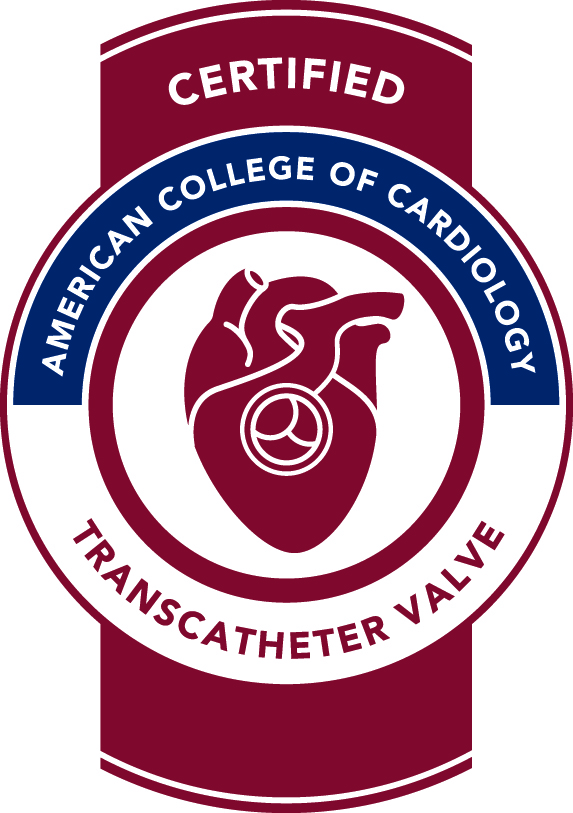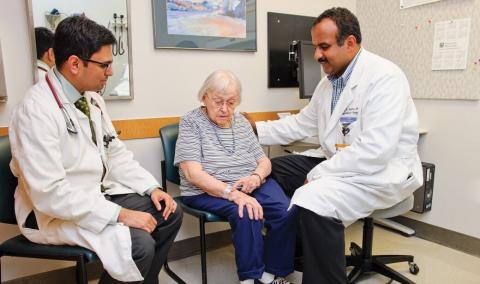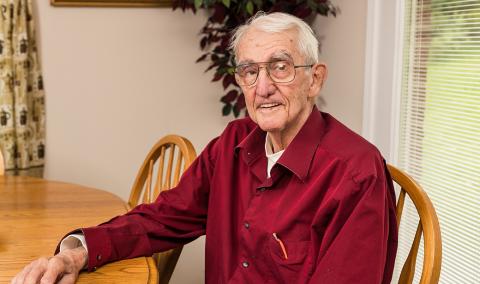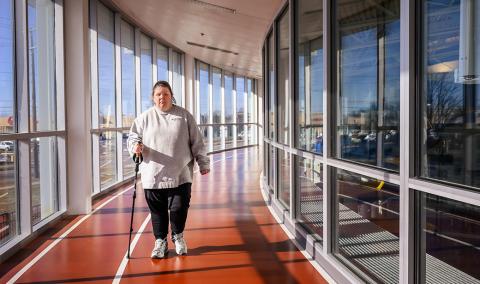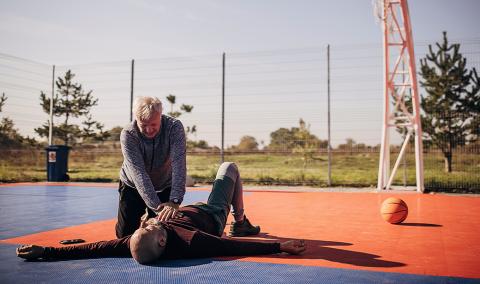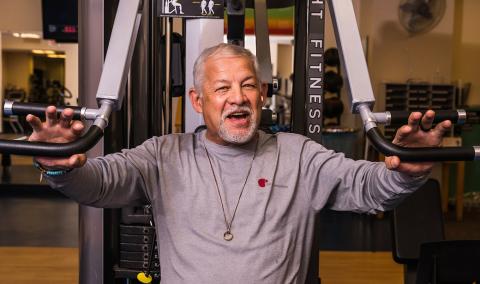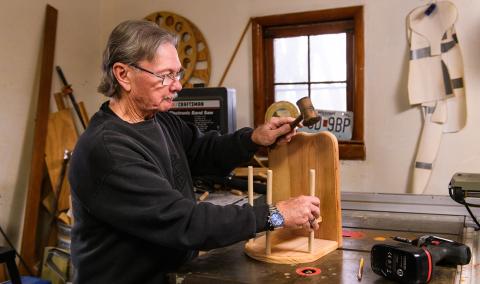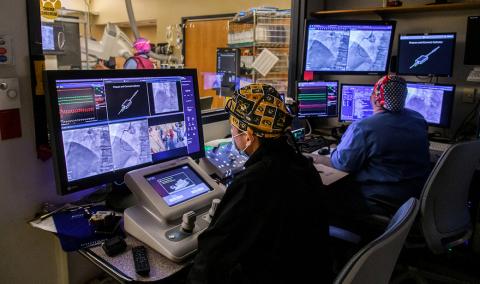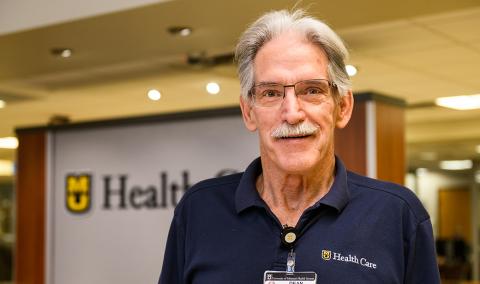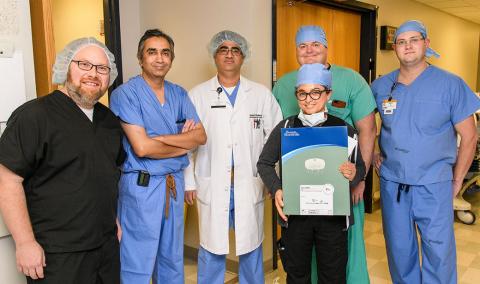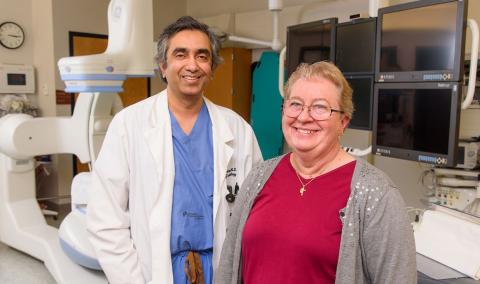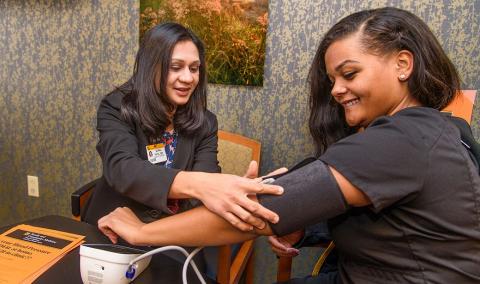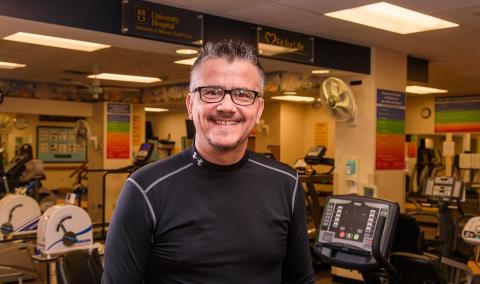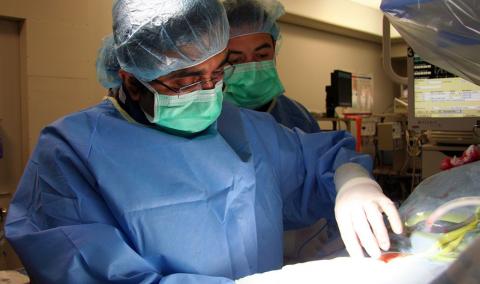MU Health Care offers transcatheter aortic valve replacement (TAVR), a minimally invasive option to treat severe aortic stenosis, a disease that narrows your aortic valve and makes your heart work harder. TAVR is a lifesaving procedure that can help relieve symptoms like chest pain, fatigue and shortness of breath.
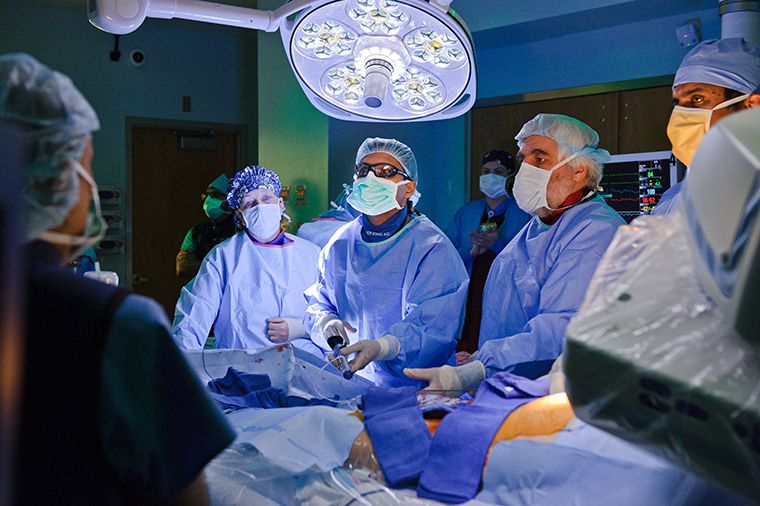
TAVR is a minimally invasive procedure to replace your aortic valve. This procedure may help you live longer and reduce your symptoms of severe aortic stenosis.
Aortic stenosis is the most serious type of heart valve disease. It occurs when your aortic valve cannot open to allow blood to flow to your body. This causes your heart to work harder, increasing your risk for heart attack, arrhythmia and heart failure.
During TAVR, our skilled heart valve team replaces your damaged valve through a blood vessel without open heart surgery. Replacing the valve improves blood flow — easing the strain on your heart and relieving your symptoms.
The most experienced heart valve team in mid-Missouri
Many people with aortic stenosis choose to have TAVR at MU Health Care. Here’s why:
- Experience. Our heart valve team has offered TAVR since 2014, longer than any other hospital in mid-Missouri.
- Teamwork. For each TAVR, two interventional cardiologists and one cardiac surgeon combine their expertise to perform the procedure as safely as possible. We also work with your cardiologist to ensure you have care and support before, during and after TAVR.
- Personalized care. Your care team will work with you and each other to determine if TAVR is right for you. They’ll also customize your TAVR procedure using the right size and type of valve based on your anatomy and symptoms.
- Convenience. You can usually get an appointment with our team within a week or two. For your convenience, our nurse coordinator will try to schedule your tests and appointments on the same day.
Are you a candidate for TAVR?
TAVR may be an option if you have symptoms of severe aortic stenosis, such as:
- Chest pain
- Shortness of breath
- Fatigue
- Heart murmur
- Fainting or light-headedness
If you’ve had a failed valve repair, TAVR may still be an option for you. And if you’ve been told you were not a candidate for TAVR in the past, it may now be an option for you.
However, TAVR may not be the best option for everyone with severe aortic stenosis. Our team may recommend other treatment options if:
- Your aortic stenosis is not severe enough for valve repair
- You are not healthy enough to undergo the procedure
- Your particular heart anatomy could affect the success of the procedure
What to expect during TAVR
Here’s what you can expect if you’re considering TAVR at MU Health Care:
A thorough evaluation of your heart and health
Before having TAVR, you will meet with our team at the Heart Valve Clinic. For your convenience, you will see a cardiologist and surgeon during the same visit.
We use a number of tests to determine the severity of your heart valve disease. This includes advanced cardiac imaging tests, such as a cardiac catheterization. You will also have a CT scan to help doctors pick the right size valve for your procedure.
During the TAVR procedure
Your TAVR care team at MU Health Care will include interventional cardiologists, imaging specialists and cardiac surgeons.
Here’s what will happen during the TAVR procedure:
- Your care team will insert a catheter (thin tube) through an artery in your groin, chest or neck.
- Using advanced cardiac imaging, they will guide the tube to your heart and place a new heart valve over the old valve.
- The new valve typically lasts 10 to 15 years.
Recovery from TAVR
After the TAVR procedure, you will recover in a specialized cardiac intensive care room. Most patients return home within 48 hours of their procedure, which means the hospital stay is shorter for TAVR than for open heart surgery. Some patients may need a longer stay to monitor their recovery.
To help you and your heart get stronger after your procedure, we’ll help you start cardiac rehab promptly after TAVR. Our cardiac rehabilitation team will design a personalized plan specific to your needs.
We can also work with your local hospital’s cardiac rehab team if you prefer to receive care closer to home.
Alternatives to TAVR for aortic stenosis
If TAVR is not right for you, we may also recommend:
- Open heart surgery to repair or replace your valve
- Monitoring, if your valve doesn’t require immediate repair or replacement
- Medicines, which cannot slow the progression of valve disease but can improve your symptoms
- Balloon valvuloplasty, a minimally invasive procedure to open up narrow valves
- Heart-healthy habits, including physical activity, avoiding fatty foods, maintaining a healthy weight and not smoking
Risks of TAVR
Most people who have TAVR find that they can breathe easier and have more energy after the procedure. TAVR may also help reduce your risk for congestive heart failure and add years to your life.
Like any surgical procedure, TAVR has risks that your doctor will help you understand before you make your decision. Some risks of TAVR include:
- Bleeding
- Stroke
- Heart rhythm problems requiring a pacemaker
At MU Health Care, our heart valve team has performed these procedures since 2014 with extremely low complication rates.
If you are considering TAVR, we will discuss both the risks and benefits with you. We will also answer any questions you have before you decide to have the procedure.
Related Conditions & Treatments
- Aortic Disease Care
- Atrial Fibrillation (AFib) and Arrhythmia
- Carotid Artery Disease
- Chest Pain
- Chronic Total Occlusion (CTO)
- Congenital Heart Disease
- Coronary Artery Disease
- Cardiothoracic Surgery
- ECMO Heart and Lung Life Support
- Heart Attack
- Congestive Heart Failure
- Heart Valve Disease
- Pediatric Cardiology
- Pediatric Vascular Anomalies
- Peripheral Artery Disease (PAD)
- Structural Heart Program
- Transcatheter Aortic Valve Replacement (TAVR)
- Vascular Surgery
- Women's Heart Health



